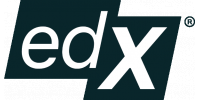- From www.edx.org
Six Sigma: Define and Measure

- Self-paced
- Free Access
- Fee-based Certificate
- 8 Sequences
- Introductive Level
Course details
Syllabus
Week 1: Six Sigma Introduction
Introduction to the Six Sigma Methodology and the DMAIC process improvement cycle. Understand the contributors to the cost of quality. Discuss the difference between defects and defectives in a process and how to calculate process yield, including a comparison of processes of different complexity using the metric DPMO.
Week 2: DEFINE - Defining the Problem
Discuss how to understand customer expectations, using the Kano Model to categorize quality characteristics. Start the first and difficult task of a Six Sigma project, Defining the Problem, and review the key content in a Project Charter.
Week 3: MEASURE - Statistics Review
Review of random variables and probability distributions used commonly in quality engineering, such as Binomial, Poisson, and Exponential. Cover descriptive statistics, emphasizing the importance of clearly communicating the results of your project.
Week 4: MEASURE - Normal Distribution
Learn the characteristics of the Normal Distribution and how to use the Standard Normal to calculate probabilities related to normally distributed variables. Cover the Central Limit Theorem, and how it relates to sampling theory.
Week 5: MEASURE - Process Mapping
Introduce Process Mapping, including SIPOC and Value Stream Mapping. We identify the Critical-to-Quality characteristic for a Six Sigma project
Week 6: MEASURE - Measurement System Analysis
Learn the basics of Measurement Theory and Sampling Plans, including
Precision, Accuracy, Linearity, Bias, Stability, Gage Repeatability & Reproducibility
Week 7: MEASURE - Process Capability
Introduction to Process Capability and the metrics CP/CPK for establishing our baseline process performance.
Week 8: Quality Topics and Course Summary
Cover the basics of Tolerance Design and the risk assessment tool failure Mode and Effects Analysis (FMEA).
Review the complete Six Sigma Roadmap before summarizing and closing the course.
Prerequisite
This course reviews basic statistics used in Six Sigma and quality management, applying them to quality problems and methods. Therefore, basic math skills are necessary.
Instructors
Martin Grunow
Professor of Production and Supply Chain Management
Technical University of Munich
Holly Ott
Senior Lecturer in Operations Managementat Technical University of Munich and Professor Production Management at Rosenheim University
Technical University of Munich
Editor

Platform
EdX est une plateforme d'apprentissage en ligne (dite FLOT ou MOOC). Elle héberge et met gratuitement à disposition des cours en ligne de niveau universitaire à travers le monde entier. Elle mène également des recherches sur l'apprentissage en ligne et la façon dont les utilisateurs utilisent celle-ci. Elle est à but non lucratif et la plateforme utilise un logiciel open source.
EdX a été fondée par le Massachusetts Institute of Technology et par l'université Harvard en mai 2012. En 2014, environ 50 écoles, associations et organisations internationales offrent ou projettent d'offrir des cours sur EdX. En juillet 2014, elle avait plus de 2,5 millions d'utilisateurs suivant plus de 200 cours en ligne.
Les deux universités américaines qui financent la plateforme ont investi 60 millions USD dans son développement. La plateforme France Université Numérique utilise la technologie openedX, supportée par Google.

